Fort Santiago or Moog ng Santiago (Fuerza de Santiago in Spanish) is the most important historical site in Manila which served as a defense fortress during Spanish Colonial Period and World War II. This is part of Intramuros (within the walls) which was referred to as the walled city of Manila.

entrance to the fort
I’ve known Fort Santiago way back in my elementary days through our textbooks. It was a wonderful experience to accompany my little girl on their educational tour, to see things personally like the ruins, the relics, and to know exactly how it feels stepping to the well-known historical site where great history happened. My brother Choy and his wife Lyn accompanied their kids too for the same reason as mine. Funny, it’s all our first time visiting the fort.
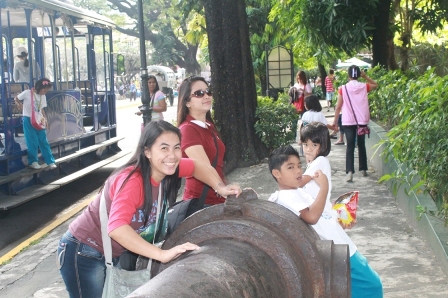
Lyn, yours truly, Magnus and Shen having a good time
From the entrance, we were welcomed by the security guards wearing the Guardia civil uniforms of the Spanish colonial era. There were calesas or the horse-drawn carriage used as one of the modes of transportation during that time. Drivers or “Kutseros” were wearing white Barong Tagalog and black pants. The ride costs P50 for one whole round in the park.
The kids enjoyed playing inside the tranvia (trambiya in Tagalog) the pre-war Manila streetcar. It is no longer operational but is a good subject for photography.
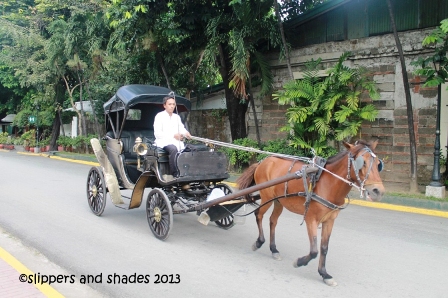
the kalesa and the kutsero
We headed to the well-maintained garden where kids enjoyed walking on the grass and watching the fountain.
Few more walks, we saw cannons that were used during the Spanish colony. In one corner, there was an old anchor covered completely with rust.
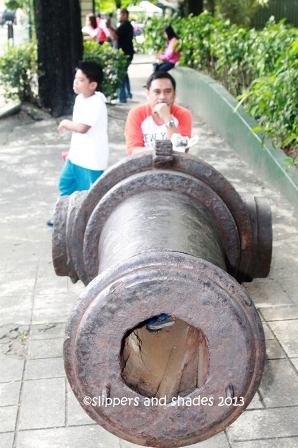
my brother is having a good time in this cannon
We passed by a tunnel and headed to the plaza. We explored a while and went down to join our group. Inside the Souvenir Store were Filipino crafts, t-shirts, and other items for sale. Choy bought tsako (chain sticks) for P350. In the information section, there were free brochures about Fort Santiago, Intramuros, and traveling in the Philippines which we asked for copies of. Visitors can ask for the schedule of tours or events inside the fort and in Intramuros.
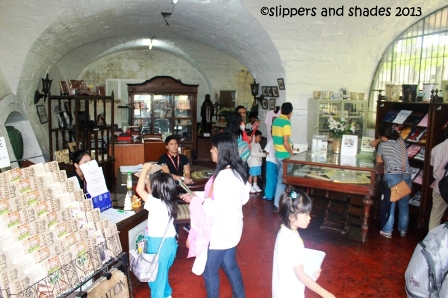
the souvenir store
There was a short film-watching in the Teatro. Unfortunately, the show had just ended when we went inside the small room.
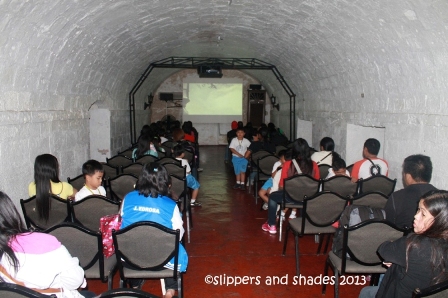
the Teatro
We bought chips and bottled juice in the Canteen. Quite pricy!

the canteen
Our last stop was in Rizal Shrine, the heart and the most visited part of Fort Santiago. It had been said that the entrance structure to the shrine was destroyed during the war but was restored creatively by the government. I can’t describe those mixed emotions as I was looking intently at the imposing stone structure.
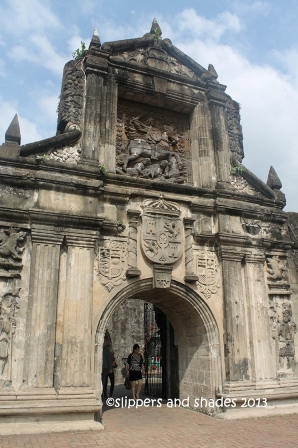
the imposing structure
Plaza de Armas (the fort’s main square) was a well-maintained ground. At the end of the lawn was the statue of our national hero Dr. Jose Rizal. The premise was so clean that it’s too shameful to throw waste there.
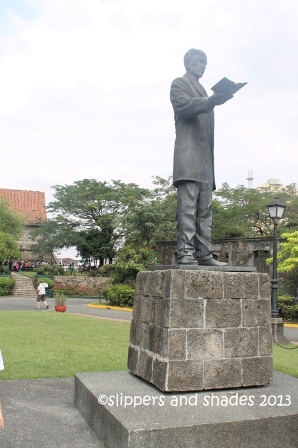
the dignified statue of our national hero
What attracted us as we enter the light and sound museum was the painting of our national artist Carlos “Botong” Francisco. It occupied the whole wall where visitors took the time to capture their photo memories.
The museum had Jose Rizal’s memorabilia where I enjoyed looking up close and personal to his two books, Noli Me Tangere, and El Filibusterismo. It was kinda eerie roaming around the museum but eventually, that feeling had vanished as we went up to the second floor.
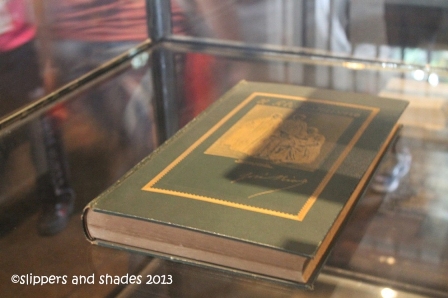
one of Dr. Jose Rizal’s book
There were several paintings of Dr. Jose Rizal hanged on the wall. What captured my attention most was the painting where he was conducting an eye operation on his mother Teodora Alonzo. I was moved with more admiration seeing the affection and love of a son to his mother.

Moving on, we saw a glass cabinet where his cloth was preserved inside then we went down to his prison cell. There were lots of curious visitors taking photos of the replica facing a big mirror. When I had my peek, I felt a sudden cool feeling while looking at it. My shot was obviously blurred.
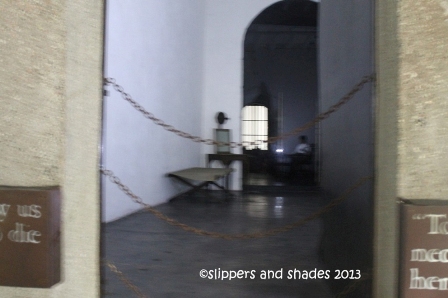
the eerie replica
From the shrine, we passed by several dungeons. It was known that the fort has a dark history. Philippine freedom fighters were sent to death by either torture or execution in this dungeon. Some died due to floods during high tide. The visitors can’t go inside the main underground as it was shut by railing steel.
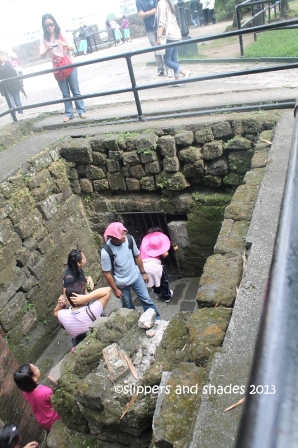
peeping at one of the dungeons
Time was so short for our history tour. I haven’t explored it all. Anyway, the park was worth visiting and I was so thankful that I had the opportunity to see Fort Santiago in real. I hope I can go back again with Pao and my hubby for they haven’t been here yet.
The park is open daily from 8:00 am to 5 pm. It can be reached through taxi, jeepney (Pier) or via LRT where the nearest station is the Central Station. The park is ideal for a family picnic and a solemn garden wedding. Entrance Fee – P75.00 for the adult and P50.00 for children or students.
The next visit is to Gardenia Factory in Laguna.
